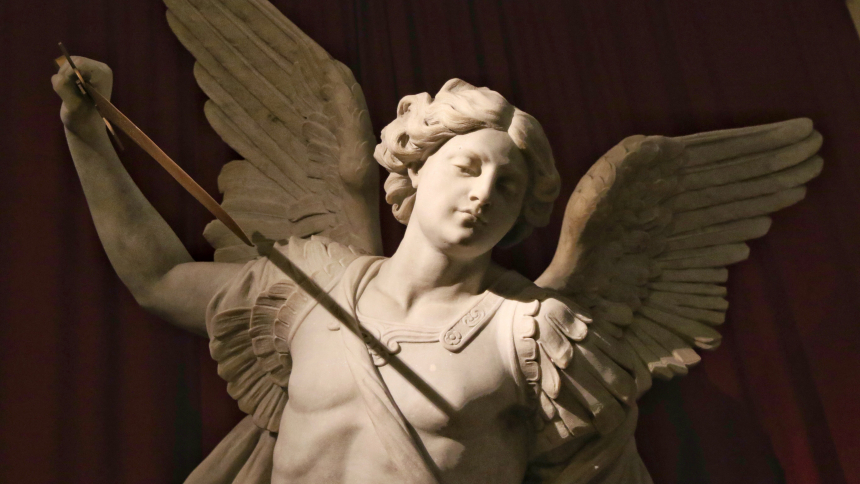
Catholics of a certain age will remember reciting a set of prayers after Mass called the Leonine Prayers. Introduced by Pope Pius IX in 1859, the prayers were offered in the Papal States for the protection of the Holy See’s temporal independence. The prayers included, among other things, three Hail Marys and the Hail Holy Queen.
A few decades later, facing an extreme anti-clericalism in Italy, Leo XIII added the Prayer to St. Michael to the Leonine Prayers and asked that they be recited by Catholics throughout the world. Following the Lateran Treaty in 1929, Pius XI ordered that they be said for the conversion of Russia. The practice was suppressed in 1965 as part of the reform of the liturgy following the Second Vatican Council.
-Back in popularity
In some places the custom of praying the St. Michael Prayer after Mass has seen a resurgence. The St. Michael Prayer holds a special place in the hearts of many Catholics, not just for its historical significance but for the profound spiritual shield it provides. It is a reminder that, as we continue on our pilgrimage on this side of eternity, we are not alone. The Archangel Michael stands ready to assist us in our battles against the forces of hell that seek to undermine our faith and virtue.
The prayer itself is a simple yet profound expression of reliance on God’s protection:
“St. Michael the Archangel,
defend us in battle.
Be our defense against the wickedness and snares of the Devil.
May God rebuke him, we humbly pray,
and do thou, O Prince of the heavenly hosts,
by the power of God, cast into hell Satan,
and all the evil spirits,
who prowl about the world seeking the ruin of souls. Amen.”
In 1994, Pope St. John Paul II said, “Although this prayer is no longer recited at the end of Mass, I ask everyone not to forget it and to recite it to obtain help in the battle against the forces of darkness and against the spirit of this world.” Valuable to Pope John Paul II, we might ask, what makes the St. Michael Prayer so powerful?
First, the prayer invokes St. Michael, the “Prince of the heavenly hosts,” who commands the legions of angels. Pope Francis has explained the archangel’s work, saying, “Michael fights to re-establish divine justice. He defends the people of God from their enemies, especially the enemy par excellence, the devil.” The prayer is a call for divine reinforcement in our spiritual battles, providing us with the armor we need to withstand temptation and evil.
Second, by praying the St. Michael Prayer, we acknowledge the reality of spiritual warfare. It reminds us that the devil and evil spirits are active in the world, seeking to lead us away from God. Our plea for St. Michael’s defense is a declaration of our commitment to resist these forces.
Third, we submit ourselves humbly to God’s protection and St. Michael’s intercession in this prayer. This act of surrender reflects our dependence on divine grace. It is a prayer of trust, declaring our hope in God’s plan for our lives.
Finally, the St. Michael Prayer is a unifying force for Catholics. It transcends cultural boundaries, uniting believers in a shared understanding of the spiritual battles we face. Accordingly, it fosters a sense of community among Catholics worldwide.
While the world around us grapples with spiritual challenges and the relentless forces of darkness, the St. Michael Prayer shines. It is a timeless beacon of hope and strength for Catholics everywhere. Pope St. John Paul II’s plea for its continued recitation echoes in our ears. As we navigate the complexities of this world, let us not forget the power of the St. Michael Prayer - a call to arms, a declaration of faith and a reminder of the protective strength that the Archangel Michael offers.
Caption: A statue of St. Michael the Archangel is seen at the Church of St. Michael in New York City in this file photo from October of 2017. (OSV News Photo/Gregory A. Shemitz)


